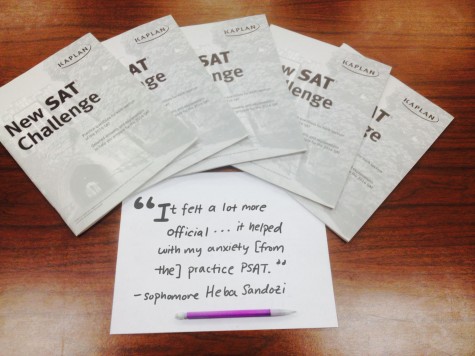Twenty-eight students take a new revised format of SAT
December 2, 2014

The majority of students reacted positively to the extra test session for math SAT practice, according to Director of College Counseling and Academic Planning, Mary Hill. “It gave students exposure to the new testing format, an inside take on what the new testing format would be about,” she said.
The smell of freshly printed paper, sharpened pencils, and anxiety fills the air as test season emerges for Upper School students at St. Paul Academy and Summit School. Despite approaching midterms, nine sophomores and nineteen juniors chose to participate in an extra session of math SAT practice before school on Wednesday, Nov. 12th in an attempt to increase their chances of success regarding the new SAT test format, which will come out in 2016. The practice test was provided by the College Board, the same organization that will release the format of the new SAT. This test consisted of two twenty-minute sections, one of which required the use of a calculator, and was supervised by Upper School math teacher Bill Boulger and Director of College Counseling and Academic Planning, Mary Hill.
“I wasn’t stressed, I didn’t feel rushed, it felt a lot more official [compared to the practice PSAT]…it helped with my anxiety [from the] practice PSAT,” sophomore Heba Sandozi said. Earlier this year, sophomores had their first taste of standardized testing when they took the practice PSAT which also contained questions that were supposed to adhere to the new format. “The test on Oct. 15 was designed by Kaplan…they used the [limited] information the College Board had given them,” Hill said. “[This test] was better simply because it gave a sense of how much time [the students] would have for each section.”
Hill indicated students largely gave positive reviews to the extra testing session. “It gave students exposure to the new testing format, an inside take on what the new testing format would be about,” she said.